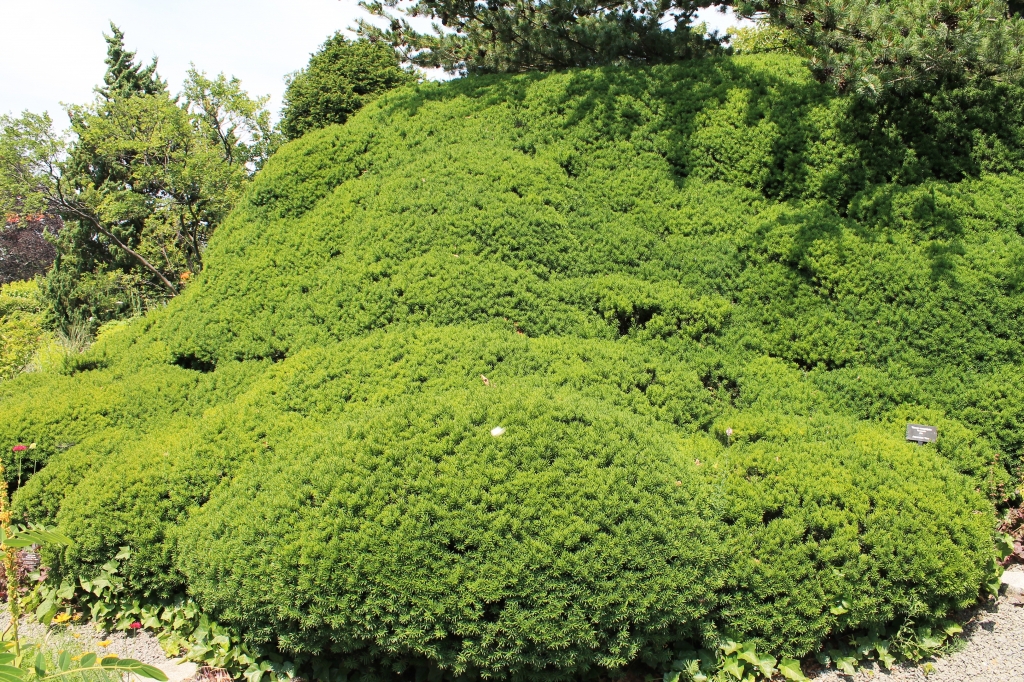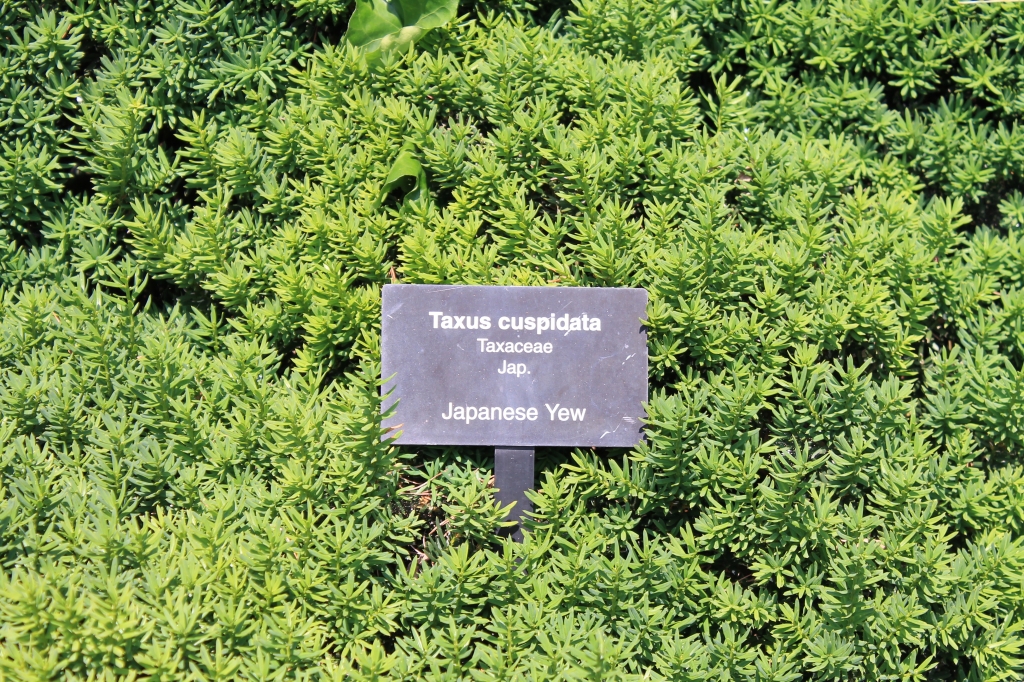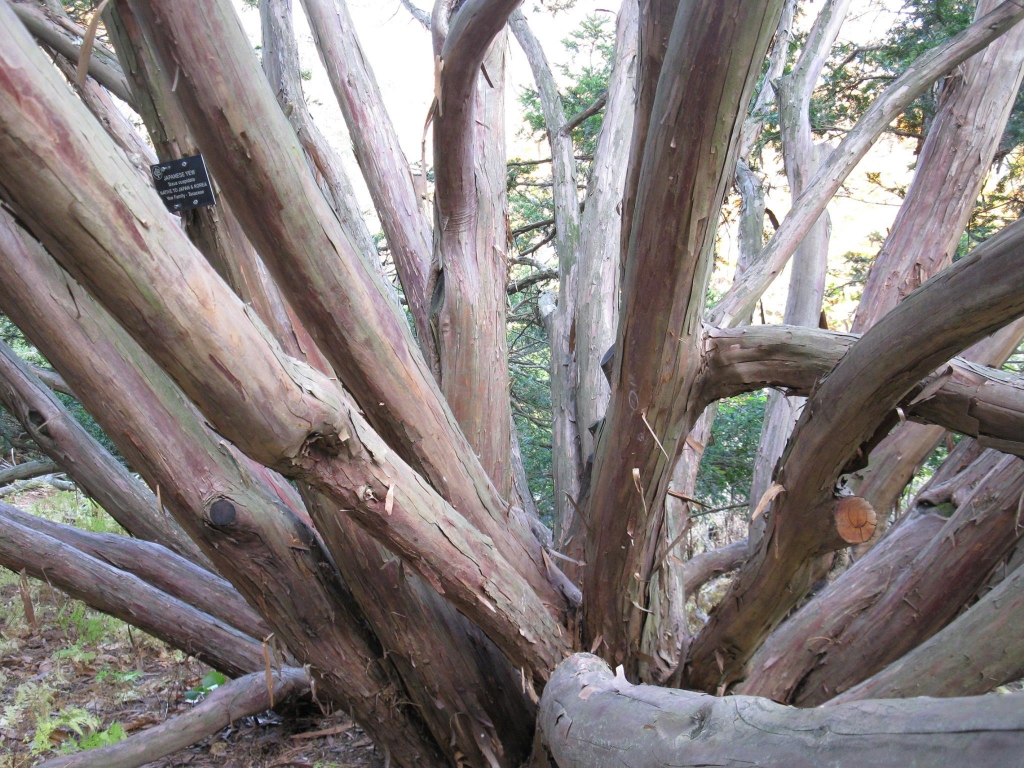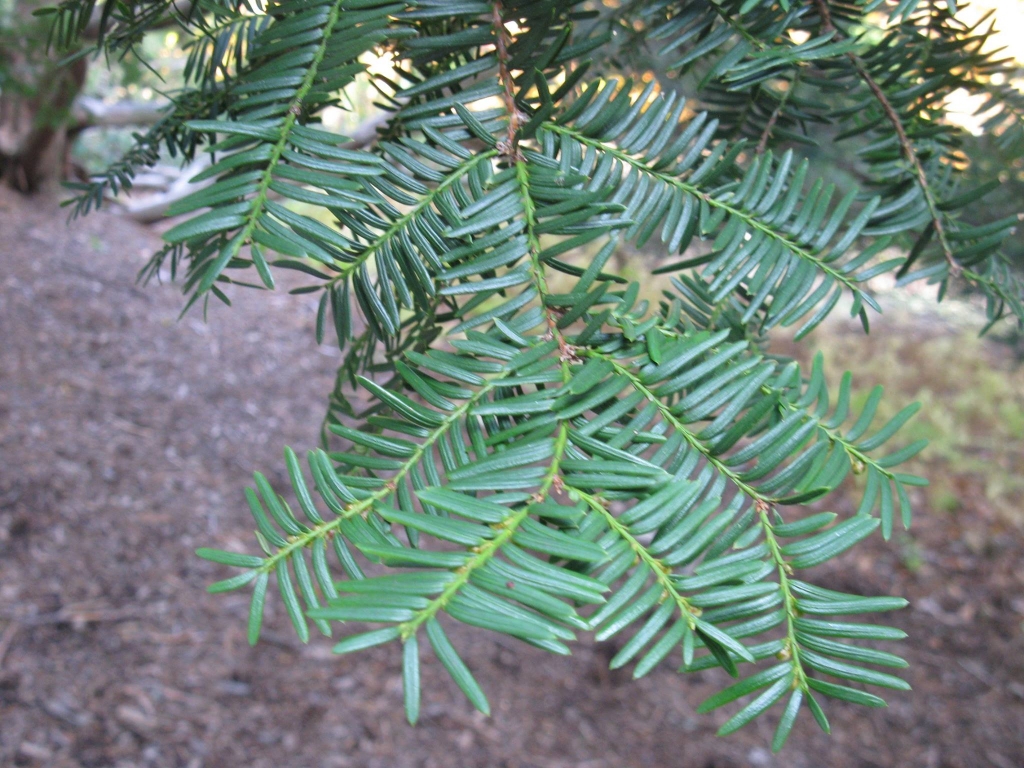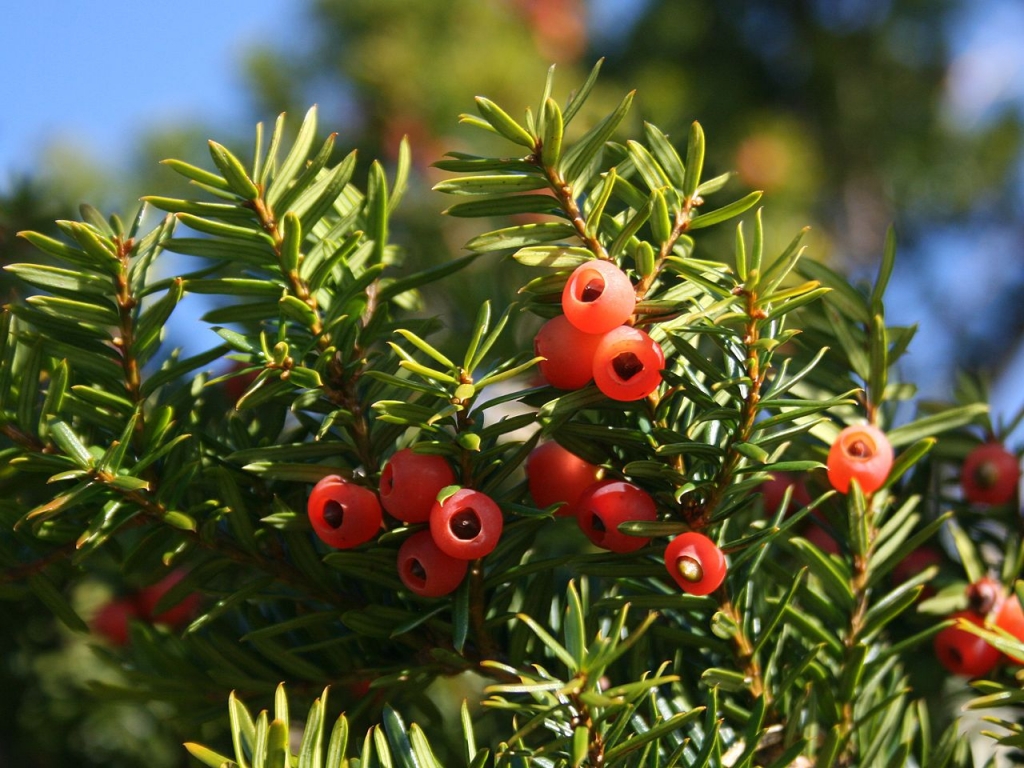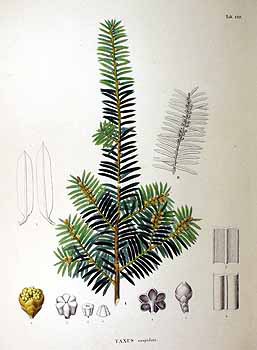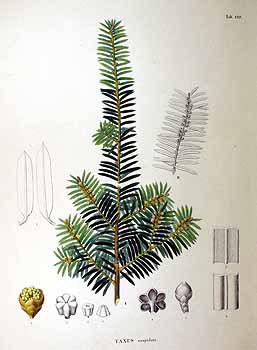
Taxus cuspidata, as described in 1846 by Philipp Franz von Siebold (1796-1866) and Joseph Gerhard Zuccarini (1790-1848) is commonly known as Japanese yew, and as Š¸‚井 (ichii) in the Japanese language. The species name is derived from the Latin term, cuspidatus; in this case, describing foliage having a cusp, tip or point; cusped, pointed.
There are two recognized varieties:
Ethnobotany. This conifer is a common ornamental in Japan (particularly var. nana) and also in the west since its introduction to the U.S. in 1833. It is easily shaped into hedges and topiary, and said to be the hardiest, fastest-growing and easiest to cultivate of all yews. In Japan, it was formerly valued for piles and foundations, cabinetry, finished carpentry, woodcarving, water tanks, pails, bathtubs, trays, chopsticks, clogs, and for bows (for which it was also used by the Ainu). Medicinally it was used as an abortifascient and antidiabetic. Commercial use has greatly declined in recent decades due to over-exploitation.
Description. Japanese yew is an evergreen coniferous
shrub or small tree which will grow to mature heights of 30 to 60 feet
(10 - 18 m) tall, with a trunk up to 24 inches (60 cm) in diameter,
measured at breast height.
Distribution. This species is native to Japan - the islands of Hokkaido, Honshu, Shikoku and Kyushu; North Korea; northeastern China -Heilonjiang, Jilin, Nei Mongol, Liaoning, Hebei, Shaanxi, and Shanxi provinces and the extreme southeast of Russia - from the Amur river basin including Sakhalin island and the Kurile islands.
Hardy to USDA Zone 4 (cold hardiness limit between -30º and -20ºF (-34.3 and -28.9°C).
